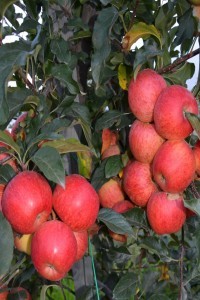Quality assessment and safety measurement of different industrial processing stages of soybean oil
Quality assessment and safety measurement of different industrial processing stages of soybean oil
The impact of industrial processing on physical and chemical properties as well as fatty acid composition of soybean oil (SBO) was analyzed. These physicochemical parameters were tested by standard (IUPAC and AOCS) methods. The observed results of physical properties showed that, at some stages in neutralization, bleaching and deodorization of crude SBO, the value of the freezing point, color, moisture content and smoke point greatly decreased whereas a slight reduction in refractive index was obtained. Likewise, in the instance of chemical parameters, saponification value, free fatty acids, peroxide value and iodine value were decreased from 177.0 to 176.1 mg KOH/g oil, 1.26 to 0.05%, 3.5 to 1.8 mEq O2 /kg oil and 125.0 to 124.1 g I2/100g of oil, correspondingly. Refining processing did not obtain major impact on the fatty acid composition. During chemical neutralization step, soap contents were generated. Consequently, soap content was reduced from 61.0 to 15.2 ppm in bleaching and deodorization stages. Additionally, this study indicates that overall deodorization step has significant influence on physicochemical parameters to enhance the quality, stability and safety measurement of soybean oil.
Keywords:
Soybean oil, Physiochemical properties,
___
- Ali, S., Anwar, F., Ashraf, S., Talpur, F. N., & Ashraf, M. (2009). Evaluation of canola seeds of different cultivars with special emphasis on the quantification of erucic acid and glucosinolates. Grasas y Aceites, 60(1), 89-95.
- Alpaslan, M., Tepe, S., & Simsek, O. (2001). Effect of refining processes on the total and individual tocopherol content in sunflower oil. International Journal of Food Science & Technology, 36(7), 737-739.
- Aluyor, E. O., Aluyor, P., & Ozigagu, C. E. (2009). Effect of refining on the quality and composition of groundnut oil. African Journal of Food Science, 3(8), 201-205.
- Farhoosh, R., Einafshar, S., & Sharayei, P. (2009). The effect of commercial refining steps on the rancidity measures of soybean and canola oils. Food Chemistry, 115(3), 933-938.
- Firestone, D. (2009). American Oil Chemist’s Society (AOCS), Official and Recommended Practices of the AOCS, 6th edi., Champaign IL, Wiley, USA. Gogolewski, M., Nogala‐Kalucka, M., & Szeliga, M. (2000). Changes of the tocopherol and fatty acid contents in rapeseed oil during refining. European journal of lipid science and technology, 102(10), 618-623.
- Gomathi, R., Anusuya, N., Chitravadivu, C., & Manian, S. (2011). Antioxidant activity of lettuce tree (Pisonia morindifolia R. Br.) and tamarind tree (Tamarindus indica L.) and their efficacy in peanut oil stability. Food Science and Biotechnology, 20(6), 1669-1677. Hurburgh Jr, C. R. (1994). Long‐term soybean composition patterns and their effect on processing. Journal of the American Oil Chemists' Society, 71(12), 1425-1427. Hyten, D. L., Pantalone, V. R., Sams, C. E., Saxton, A. M., Landau-Ellis, D., Stefaniak, T. R., & Schmidt, M. E. (2004). Seed quality QTL in a prominent soybean population. Theoretical and Applied Genetics, 109(3), 552-561.
- Karabulut, I., Topcu, A., Yorulmaz, A., Tekin, A., & Ozay, D. S. (2005). Effects of the industrial refining process on some properties of hazelnut oil. European journal of lipid science and technology, 107, 476-480.
- Mahesar, S. A., Shah, S. N., Shirazi, S. T. H., & Nizamani, S. M. (2017). Outcome of refining on the physicochemical properties of cottonseed oil. Pakistan Journal of Analytical & Environmental Chemistry 18(2), 105-111.
- Mohdaly, A. A. A., Sarhan, M. A., Mahmoud, A., Ramadan, M. F., & Smetanska, I. (2010). Antioxidant efficacy of potato peels and sugar beet pulp extracts in vegetable oils protection. Food Chemistry, 123, 1019-1026.
- Nichols, D. M., Glover, K. D., Carlson, S. R., Specht, J. E., & Diers, B. W. (2006). Fine mapping of a seed protein QTL on soybean linkage group I and its correlated effects on agronomic traits. Crop Science, 46(2), 834-839.
- Pagano, M. C., & Miransari, M. (2016). The importance of soybean production worldwide. In Abiotic and biotic stresses in soybean production. Academic Press, 1-26.
- Paquot, C., Hautfenne, A. (1987). International Union of Pure and Applied Chemistry, Standard Methods for the Analysis of Oils, Fats and Derivatives, 7th edi., Blackwell Scientific, London, pp. 347.
- Shad, M. A., Pervez, H., Zafar, Z. I., Nawaz, H., & Khan, H. (2012). Physicochemical properties, fatty acid profile and antioxidant activity of peanut oil. Pakistan Journal of Botany, 44(1), 435-440.
- USDA, 2015. World Agricultural Production. https://apps.fas.usda.gov/psdonline/ circulars/production. Circular Series (accessed 15 August 2015).
- Verleyen, T., Sosinska, U., Ioannidou, S., Verhé, R., Dewettinck, K., Huyghebaert, A., & De Greyt, W. (2002). Influence of the vegetable oil refining process on free and esterified sterols. Journal of the American Oil Chemists' Society, 79, 947-953.
- Wilcox, J. R., & Shibles, R. M. (2001). Interrelationships among seed quality attributes in soybean. Crop Science, 41(1), 11-14.
- Zacchi, P., & Eggers, R. (2008). High‐temperature pre‐conditioning of rapeseed: A polyphenol‐enriched oil and the effect of refining. European Journal of Lipid Science and Technology, 110, 111-119.
- Yayın Aralığı: Yılda 2 Sayı
- Başlangıç: 2019
- Yayıncı: Burhan ÖZTÜRK
Sayıdaki Diğer Makaleler
Burhan ÖZTÜRK, Erdal AĞLAR, Orhan KARAKAYA, Onur SARACOĞLU, Sefa GÜN
Olive growing and importance of plant nutrition in olive cultivars
Cansu DÖLEK GENCER, Volkan OKATAN, Nazan KORKMAZ
Quality assessment and safety measurement of different industrial processing stages of soybean oil
Nasrullah SYED, Sarfaraz MAHESAR, Syed Tufail H. SHERAZİ, Mustafa SOYLAK
Mechanical behavior of Deveci pear cultivar affected by maturation
